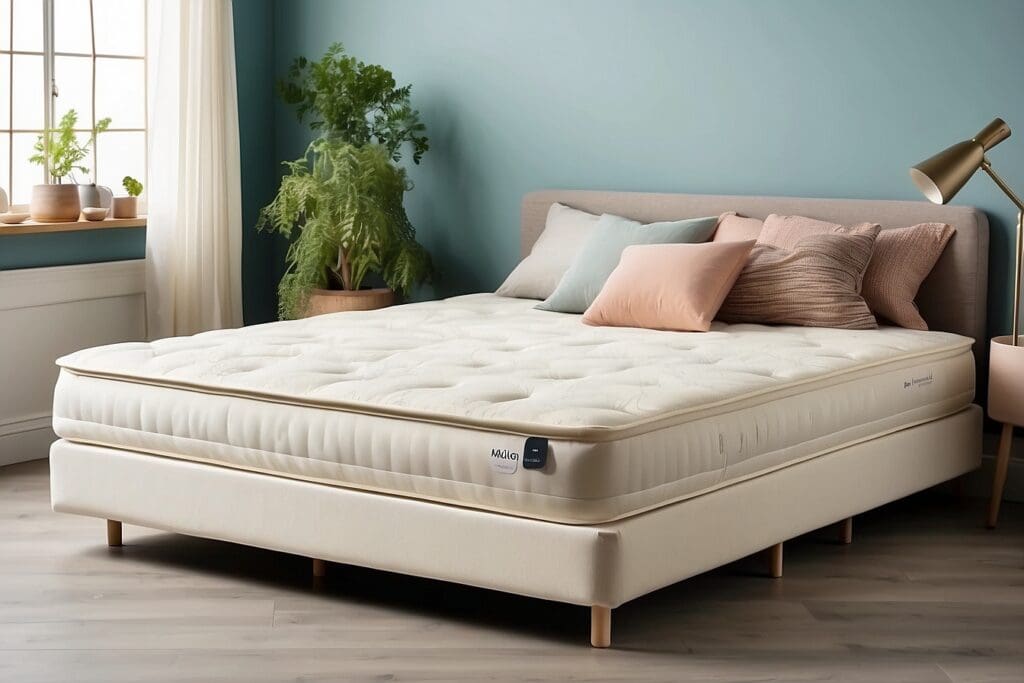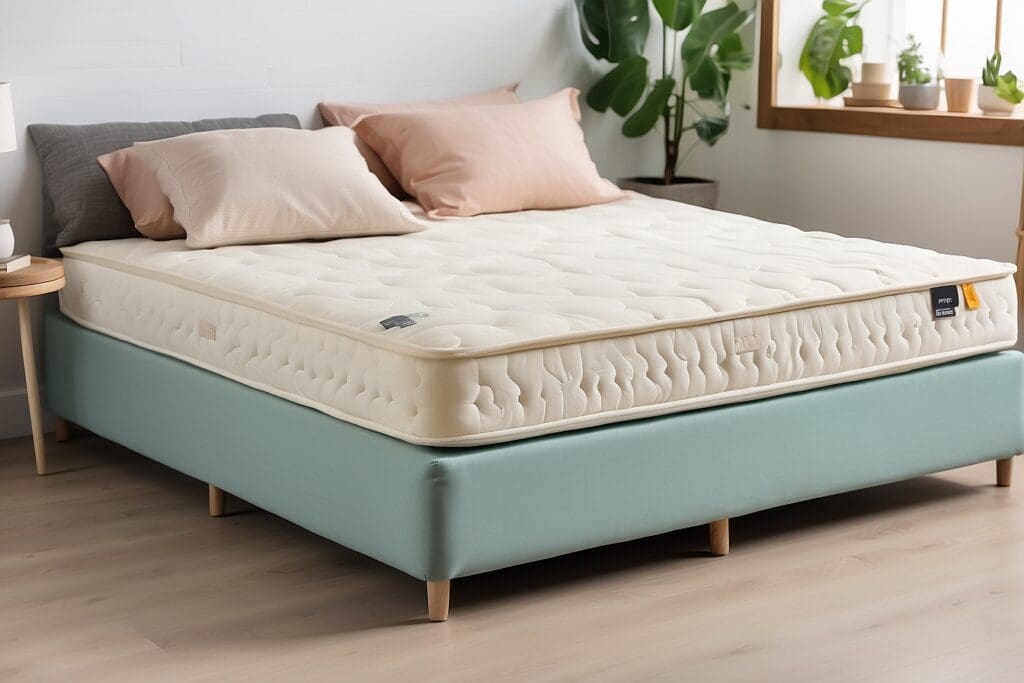Our beds – we spend about one-third of our lives sleeping in them.1 I have always been told that sleeping eight hours per night is better for your health, and that certain mattresses are better for your back. However, that was the extent to which I ever thought about my mattress and bed sheet choices. I had never given much thought as to whether these items could or should be eco-friendly and non-toxic until I saw a store near my apartment whose sole purpose was the sale these specialized items.
What’s in Our Mattresses?
It turns out that mattresses are made out of a whole host of materials that I would have never guessed. For instance, flame retardants. In 2006, the Consumer Product Safety Commission of the United States government required all mattresses manufactured in the U.S. to “resist ignition to an open flame source such as a candle, match, or cigarette lighter.”2 To achieve a fire-resistant mattress, manufacturers coat the mattress with toxic fire retardant chemicals during the last stage of the manufacturing process. Unfortunately, the manufacturers do not have to disclose to consumers the fire retardants they have used.3
There are several commonly used fire retardants. Boric acid is a common retardant, which the U.S. Environmental Protection Agency (EPA) classifies as being in Toxicity Category III for oral and dermal toxicity and skin and eye irritation.4 Another chemical used to fireproof mattresses is antimony, which is a metal that is similar to arsenic. Its primary use is in antimonial lead, which is used to make lead acid storage batteries. It has been found to cause respiratory issues in humans, such as chronic bronchitis, and lung tumors in rats.5 Polybrominated diphenyl ethers (PCDE’s) were used as a fire retardant chemical in mattresses up until 2004. However, it was determined that these chemicals are so damaging to your liver, thyroid, and nervous system, that manufacturers have stopped using them.6 Thus, if you are sleeping on a mattress that you bought before 2004, it is possible that it was made with PCDE’s.
The latest craze for memory foam mattresses has presented us with an additional health hazard. The additives put on polyurethane foam (and other foams made with latex) release chemicals as they break down, which is known as “off-gassing.” Many people notice a chemical smell the first few days of having their new memory foam mattress. However, even as the smell fades over time, “off-gassing” will still occur due to the materials of the mattress.7
Two doctors, one in the United Kingdom and one in New Zealand, recently concluded a decade-long study in which they looked at a toxic crib environment’s impact on infant health. They have concluded that a toxic sleep environment is a possible cause of Sudden Infant Death Syndrome (SIDS).8 Many cribs have a vinyl covering, which also produces carcinogenic off-gassing. Inhaling vinyl chloride has been linked to a rare form of liver cancer in humans. Since infants spend up to 18 hours per day sleeping, it is essential that their sleep environment is non-toxic.9
Non-toxic and Eco-Friendly Mattress Options

There are a few options when it comes to upgrading your sleeping situation. First, there are certified organic mattresses, which must meet the Global Organic Textile Standards. However, organic mattresses are often made with materials that break down easily and are susceptible to microbial growth.10 Second, there are wool mattresses. Wool is a natural fire-retardant, but some manufacturers coat these mattresses with fire-retardant chemicals regardless. As I mentioned before, manufacturers do not have to state whether or not they have used these chemicals.11
Third, you can obtain a prescription from a doctor (medical doctors, osteopaths, or chiropractors) for a chemical-free mattress, i.e. a mattress that has not been treated with fire retardants. However, this does not solve the off-gassing issue that many other mattresses, such as memory foam mattresses, have.12 Fourth, there are certain mattress brands that are not organic but are non-toxic. They can be made with safe fire retardants (since they still have to meet federal standards), such as natural silica. There is also non-off-gassing polyurethane foam. By itself, polyurethane foam is a non-toxic material. However, companies add compounds to this foam to change its properties, such as to make it memory foam, and those additives are what cause the off-gassing. Non-toxic mattresses can also be made with organic cotton.13 There are even natural latex mattresses14 on the market.
It is nice to know that there are safer options available, even despite the federal standards of fire-resistant mattresses. Once I need a new mattress, I will definitely be looking into a non-toxic option!





